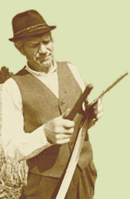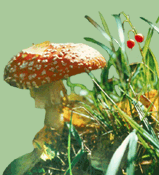Milestones of early development of Earth and life
Ivar Puura outlines the major milestones in the research for the oldest traces of life. Accroding to the current knowledge, the Solar system and Earth are about 4.6 billion years old, while the findings from Apex chert in Australia, dating back from about 3.46 billion years ago, are lately considered to be the earliest traces of life on Earth. However, new findings can move this date back or forth.
Traces of life in prehistoric stone
Aave Lepland and Aavo Lepland tell the story of the quest for the oldest traces of life on Earth. For a long time, mineral particles from Greenland, 3.87 3.8 billion years old, and the fossils of cyanobacteria from Australia were believed to be the evidence of Earths earliest life. The authors describe different discoveries made during the last century, and give an overview of different structures that can potentially be the evidence of earliest traces of life. There have been many happy discoveries and many disappointments, and now, in 2002, we can only say that life is proved to be existed 2.7 billion years ago in Pilbara, Australia. However, the search for earliest traces of life continues, with Greenland being the most hopeful site for positive results in the future.
The evil and mysterious Human Papilloma Virus
Tiit Talpsep describes the generator of warts and precancer of vulva and vagina the Human Papilloma Virus. There are more than a hundred types of human papilloma virus, half of which cause benign tumors, while about forty of them infect genitals, causing condyloma, or genital warts. A few types of the virus, however, can cause cervical cancer. With the help of several figures, the author explains how the virus functions and gives tips for avoiding the dangerous types of virus.
The story of Grey Owl
Tiiu Speek writes about an Indian, who did not exist Grey Owl alias Archibald Stansfeld Belaney, the author of well-known book about beavers, The Adventures of Sajo and His Beaver People. Born in England, he moved to Canada and pretended to be an Indian for about twenty years. He was a serious nature conservationist and devoted the second half of his life to protecting beavers.
Kõnnumaa landscape protection area
Uudo Timm invites the reader to Central Estonia, to see the extensive mires and marginal formations of continental ice sheet of Kõnnumaa. The landscape protection area was founded in 2000, but different parts of it had been protected already earlier.
European rarities in Estonia
Riinu Rannap describes the green toad, Bufo viridis, as the most threatened amphibian species of Estonia. In 2002 there were no findings of the green toad in Estonia.
Interview: HI-virus can and must be managed
Toomas Kukk has interviewed Mart Ustav, professor of microbiology and virology.
Eesti Loodus enquires
Veljo Runnel introduces a new CD Night Calls Sounds of Estonian Nature as the first in the series of Soundjourneys by Estonian Fund for Nature.
Asta Tuusti tells about possibilities to promote environmental education.
Essay
Mall Hiiemäe writes about water in our rivers and lakes.
The Circle in Byelorussia
Jaan Pärn and Mati Kose portray the Tartu Students' Nature Protection Circles journey to Byelorussia, a country known as Lukaðenkos rule of terror. However, there are many more faces to the country, such as the nation and nature, characterized by wide rivers and extensive fields and forests.
The flow of the River Narva has been measured for a century
Arvo Järvet describes the periods in flow measurement on Narva River. In 2002, a hundred years passed from setting up the first measurement posts on the Narva River. The current data enable to make conclusions about changes in Estonian water conditions in the 20th century.
Practical tips: to feed or not to feed
Toomas Jüriado gives advice about managing ones bird feeder.
Sipa linden, one of the best-known old trees in Estonia
Tiit Petersoo looks at one of the most dignified old trees in Estonia, the Sipa linden in Rapla County.
| 

![[IN ENGLISH]](images/gb.gif)






